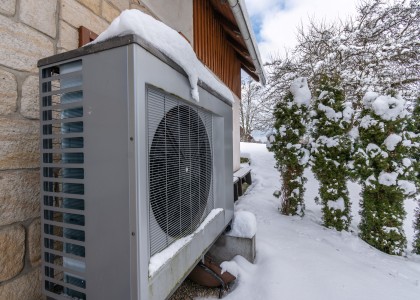We appreciate the fact that the Committee is holding a hearing on Power Generation Resource Incentives and Diversity Standards. We support adding such standards to pending federal energy legislation. However, we believe it was an oversight not to include a witness who can discuss the role of energy efficiency resources in incentives and diversity standards. Energy efficiency resources are an important cornerstone for America=s energy policy. Energy efficiency has saved consumers and businesses trillions of dollars in the past two decades, including more than half a trillion dollars in 2004 alone. And we have barely begun to capture the full savings that are available. Many studies indicate that U.S. energy use can be cost-effectively reduced by 20% or more if the proper policy support is provided.
A key policy ACEEE has proposed to the Senate Energy Committee is an Energy Efficiency Resource Standard (EERS). An EERS is a simple, market-based mechanism to encourage more efficient generation, transmission, and use of electricity and natural gas. An EERS consists of electric and gas end-use savings targets for retail utilities, with flexibility to achieve them through a market-based trading system. With trading, utilities that save more than their target can sell savings credits to utilities that fall short of their savings targets. Trading would also permit the market to find the lowest-cost savings nationwide. However, unlike other resources such as renewable energy and coal, energy efficiency resources are distributed throughout the 50 states – studies on many states have found cost-effective opportunities to reduce electric end-use energy use by 20% or more.
We recommend that the EERS targets for electricity and natural gas start at modest levels (e.g. 0.25% of sales annually) and ramp-up over several years to savings levels currently achieved by the most successful states (e.g. 0.75% of sales annually). Peak electricity demand savings should also be included. To ensure that costs will be moderate, in addition to permitting trading, we recommend that electric and gas utilities be permitted to buy credits for 3 cents per kWh of electricity or 30 cents per therm of gas, which is less than half of the current retail cost of these energy sources.
EERS-like laws are now in operation in several states and countries. Texas's electricity restructuring law created a requirement for electric utilities to offset 10% of their demand growth through end-use energy efficiency. Utilities in Texas have had no difficultly meeting their targets and are currently exceeding them. Pennsylvania's new Alternative Energy Portfolio Standard includes end-use efficiency among other clean energy resources. The Governor of Illinois has just proposed an EERS, based on the Texas program but with higher savings targets. EERS-like programs have also been established in the United Kingdom and Italy and are being considered by other countries.
Because EERS annual requirements are cumulative, over a decade annual savings would steadily mount. Under our proposal, after ten years, annual electricity and natural gas use will be reduced by 6.75% below current forecasts. EERS savings would amount to roughly half of the currently projected growth in electric sales over the decade 2006-2016 and over one-half of projected growth in natural gas sales over this same period. We are now preparing a more specific analysis of savings from an EERS and other federal policy options, and plan to release a report on this topic in about a month. Our preliminary estimate is that an EERS would reduce U.S. energy use by about 27 quadrillion Btu ("quads") on a cumulative basis by 2020, and 2.1 quads annually after the ramp-up is complete. The annual savings represent about 2% of U.S. energy use. These savings are roughly equal to the savings from the efficiency provisions in S. 2095, and thus addition of an EERS would approximately double the energy savings in the federal energy bill. We also estimate that energy bill savings from an EERS will total about $155 billion on a cumulative basis through 2020, including annual savings of about $12 billion once the ramp-up is complete.
While we support an EERS, we also recognize that opinions about this aspect of energy policy are diverse, and hence thoughtful compromises may be needed to allow effectual policies to proceed. We recognize that a variety of energy resources will be needed in the U.S. to meet future needs, and therefore it behooves the U.S. to encourage the development of clean new advanced energy sources. Such resources clearly include renewable energy, and in the views of many stakeholders, also include "clean coal" and advanced nuclear generation. We offer several options for combining an EERS with these advanced energy sources. First, a Clean Energy Resource Standard (CERS) could be enacted that requires that a specified amount of energy come from qualified clean sources, with targets gradually rising over time. A single target could be set and the various technologies allowed to compete in the market to most economically meet these targets, or minimums or maximums could be set for specific sources. Second, a point system could be established that favor some sources over other sources based on their characteristics, and targets set in terms of the number of points that energy suppliers need to earn. A point system is more complicated, but could be used to avoid controversies over minimum targets for specific technologies.
We recommend that the Senate Energy Committee seriously explore these options. If these options, including energy efficiency resources, are "left on the table", an energy bill is likely to be modest, and unlikely to truly address our nation's energy problems.


